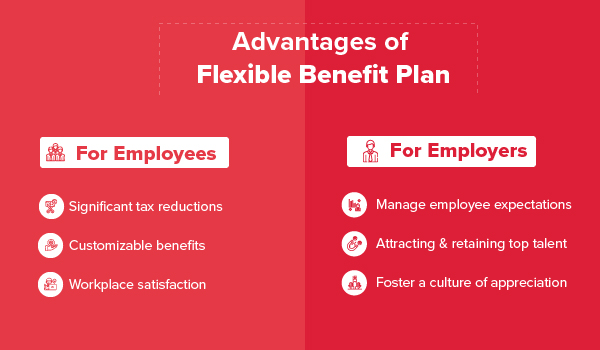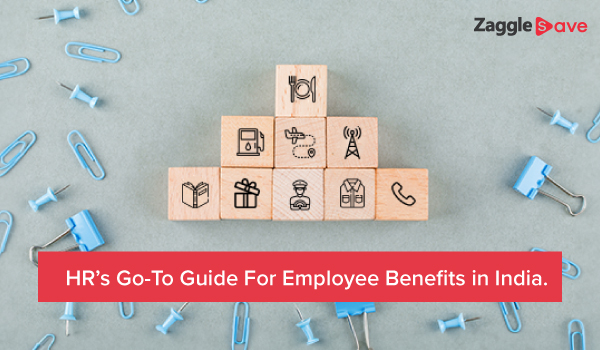Priorities of employees have taken a massive shift in the last couple of years. As per a Forbes report, 40% of companies believe that workers quit their jobs in favor of the ones that offer a better flexible benefit plan for employees. Given the importance of employee benefits, companies are formulating plans to leverage these flexible benefits to retain and attract key talent. However, HR leaders must navigate the complexity of tailoring a plethora of benefits to suit the individual requirements of specific employees.
In this article, we will discuss everything that goes into creating an ideal flexible benefit plan for employees.
Designing A Flexible Benefit Plan for Employees in India
Flexible benefits plan is a program offered by employers for their workforce, allowing them to choose the benefits as per their preferences and requirements. It essentially gives employees control over how they want their compensation package to be structured. The flexibility and freedom to choose their own benefits act as a value proposition attracting resources to the company.
Its significance is growing rapidly, with 62% of the surveyed companies transforming their benefit offerings in the last year, according to the Forbes report. Offering a flexible benefit plan for employees can give companies a competitive edge in the market. Some of the advantages are listed below.

For Employees
- A flexible benefit plan for employees can offer significant tax reductions utilizing exemptions like meal coupons, travel allowances, and house rent allowance (HRA), thereby increasing the compensation you get in hand.
- Employees are free to customize the benefits based on their needs and requirements aligning them with their life stage. It allows them to prioritize their choices and plan their finances more effectively.
- Employees get higher workplace satisfaction by gaining control over the benefits package. It gives a feeling that employers are meeting their needs, which makes employees feel valued and motivated, influencing their productivity.
For Employers
- With a flexible benefits plan for employees, it becomes easy for employers to manage employee expectations through significant tax savings without any extra cost or operational overhead to them.
- The benefits program is an essential tool in attracting and retaining top talent in the market. It empowers businesses to offer customizable flexible benefits plans for employees demonstrating a commitment towards employee well-being.
- Through flexible benefits programs, employers can foster a culture of appreciation, which will reflect in overall productivity and business growth.
But what are the different benefits that companies can offer that increase savings and give more purchasing power? Let’s discuss that.
Flexible Employee Benefits
Gratuity
Gratuity is a legal benefit employees are entitled to as a promise of employment by the company, as per the Gratuity Payment Act. It works out well for employers as they get a tax benefit of Rs. 1,000,000 by paying gratuities.
Statutory Benefits
These are the benefits that are mandated by the rule of land and industry standards. Some of these flexible benefits are:
Sick Leave: Employees must receive sick leave, whenever an employee is ill and unable to work. This leave is paid for by the employers
Maternity Pay: This is available for female employees which allows them 6 – 8 months of leave for pregnant women under Maternity Allowance.
Paternity Pay: Available for male employees, this is statutory leave that can be utilized when their wives are expecting a child.
Flexible Work Timings: Employees can request flexible working arrangements if and when they have fair reasoning for the same.
Tax Exemption Benefits
The Income Tax Act of India offers salaried professionals a plethora of tax exemptions and deductions that can be used to reduce tax liability. While it is an individual’s choice to opt for an exemption, employers can facilitate tax-saving opportunities. Some of these are allowances as described below:
House Rent Allowance (HRA): The amount paid towards your rent is partially exempted by the authorities based on the residence city and salary structure.
Leave Travel Allowance (LTA): It is aimed at providing employees with tax-free vacations per year. The exemption has a threshold limit.
Meal Vouchers: Employers can provide their staff with food allowance or meal vouchers with a monthly spending limit, which is exempted from taxes.
Medical Reimbursement: Employees get a refund for certain medical expenses like hospitalization bills, and medicine costs that they incurred for themselves and their dependents.
Other tax-free allowances available are offered for fuel purchases, gift vouchers, uniforms, and mobile or internet bills.
Employees’ Provident Fund Organisation (EPFO)
The provident fund is a mandatory investment instrument for all salaried professionals. In this, the employer needs to contribute 12% of the employee’s basic salary, while the employee contributes 10%.
Implementing Flexible Benefits to Employees Seamlessly
As much as it is beneficial, providing a flexible benefits plan for employees can seem complex. It is actually a mammoth task to customize compensation and flexible benefits packages for employees. It further grows in complexity as the number of employees increases.
To manage employee benefits effectively, you will need Zaggle SAVE. It is an employee benefits platform that automates benefits management and fund allocation reducing the scope of mistakes. For employees, it replaces paper-based coupons and receipts with all-inclusive prepaid cards. Employees get multi-wallet cards to manage all their allowances across food, fuel, telecom, gifts, and education. Meanwhile, employers can centralize benefits management with Zaggle SAVE.
To learn more about Zaggle SAVE, click here.


